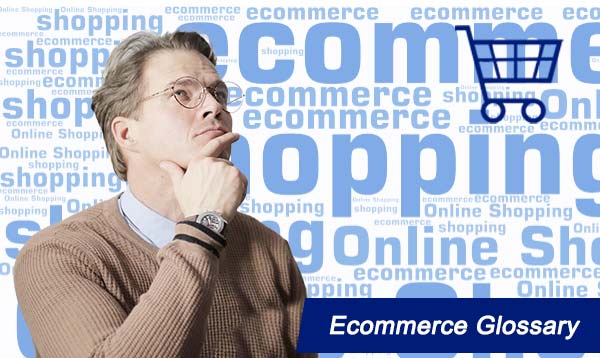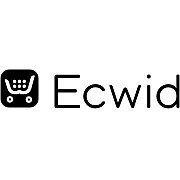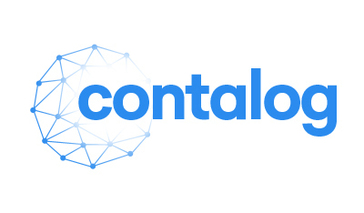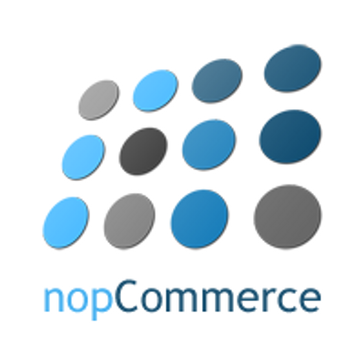Ecommerce Glossary
Ecommerce Glossary Table of Contents
- Ecommerce Glossary
- Ecommerce
- Affiliate Marketing
- Brick And Mortar Business
- Business To Business
- Business To Consumer
- Consumer Funnel
- Call-To-Action
- Consumer Rate
- Email Marketing
- Google Adwords
- Cart Abandonment Rate
- Cart-To-Detail-Rate
- Chargeback
- Click-To-Open Rate
- Google Analytics
- Overview of Ecommerce Glossary
- Best Ecommerce Solution by Rating
- Best Ecommerce Solution by Price
- Best Ecommerce Solution by Rated Features
- Check Your Ecommerce Solution Offers Round The Clock Support
- Make Sure Your Ecommerce Solution Offers The Features You Need
- Best Ecommerce Software Solution Verdict
- Ecommerce Software Frequently Asked Questions
- What is the best Ecommerce Solution?
- What is the cheapest Ecommerce Solution?
- Is there a free Ecommerce Solution?
- View all of the top Ecommerce Software Solutions
- Ecommerce Alternatives
- Ecommerce VS Side by Side Comparisons

Ecommerce Glossary
Ecommerce
E-commerce is simply the act of electronically purchasing or selling goods over the Internet or on online personal services. The major advantage of eCommerce is that it offers a quick means of making purchases as well as convenient ways of payment through credit cards, PayPal, and other online payment methods. The popularity of eCommerce has grown significantly in recent years with many consumers increasingly shopping online to purchase a variety of items. The growth in eCommerce stores has increased the demand for professional eCommerce development organizations.
A professional eCommerce development organization understands how eCommerce works and develops customized websites for businesses, providing businesses with an easy way of establishing a presence on the Internet and offering consumers more choices and accessibility to purchase products and services from a website. eCommerce developers take into consideration the marketability of the products for eCommerce as well as the ability of the site to handle various payment systems such as PayPal and WorldPay. eCommerce developers also provide eCommerce solutions that include database integration, shopping cart software and shopping list building and management. eCommerce developers work with the consumer, from the initial website design to the final checkout, ensuring that the website meets all of the expected needs of consumers. eCommerce is a rapidly growing industry and a great way to expand any business.
An eCommerce website is essential to the growth and success of any online business. Consumers expect to find a variety of shopping options and the convenience of purchasing goods from a website rather than visiting a store makes online shopping easier for consumers. As consumers become used to online shopping, the success of eCommerce will be determined by its ability to grow with the consumer. eCommerce businesses should reach out to their consumers to increase consumer awareness and increase sales.
Affiliate Marketing
Affiliate Marketing is a great way for new Internet marketers to learn the ropes. Affiliate Marketing is an excellent and easy method for beginners to kick start an online business but in order for you to be successful as an affiliate marketer, you need to understand affiliate marketing secrets. In fact, if you want your affiliate marketing venture to really take off then you have got to make sure that you are getting your affiliate marketing secrets right! This article will educate you on one of the most important aspects of making money through affiliate marketing and that is the importance of creating good quality content.
In order for your affiliate marketing business to be successful, you must focus on two main components: your sales process and your commission structure. In order to generate a strong revenue stream, it is vital that you have good conversions. This means that your website must be regularly visited and that the visitors to your website are interested in what you have to offer and willing to take action if they want to get the things that they have ordered from you. Therefore, if you want your social media platforms to effectively help you generate revenue and your sales, you need to ensure that you are providing good value to your audience. The best place to do this is to create useful and engaging content and to encourage the use of social media platforms by your visitors to promote your products.
Another common affiliate marketing secret is to ensure that you build and maintain good relationships with other affiliate marketers and their management and staff. These people can potentially become your lifetime source of affiliate commissions. It takes time to build relationships so it is crucial that you spend some time building these relationships. Remember that the people who you affiliate with are potential lifetime buyers. Therefore, if you are a good referral marketing partner and treat them well, you are guaranteed success as an affiliate marketer.
Brick And Mortar Business
Brick and mortar essentially refer to an actual physical presence of a business or organization in a commercial structure or building. The phrase brick-and-mortar business is frequently used to describe a business that possesses or leases industrial warehouses, factory outlying structures, or retail stores for the operations. These businesses obtain their commercial building equipment from a variety of sources. They can purchase commercial building equipment either directly from distributors or hire sub-contractors to supply them with the needed equipment. In addition, they may also receive construction loans from banks for the purpose of purchasing commercial building materials.
Brick and mortar retailers operate under a different set of principles compared to online retailers. Most brick and mortar retailers operate under a regional location principle, wherein the company's sales are made based on the sale volume of a particular store. A major advantage of brick and mortar retailers is that they maintain a physical presence, often employing sales personnel and other employees who are on the territory of the stores they carry. Online retailers, on the other hand, do not have any physical presence; their sales are based on the ability of consumers to access their web sites and make purchases from there.
Brick and mortar retailers typically sell to consumers in the local area of where they are located. Online retail stores, on the other hand, tend to appeal more to consumers residing in other areas of the country or the world. As a result, they have developed a strong online retail presence. Their web sites are generally located in other countries or in different states. In addition, they employ various marketing strategies including various promotions and discounts, in order to attract consumers to purchase goods from them.
Business To Business
Business to business is a scenario where one company makes an agreement with another to render services and/or sell products to each other. This generally takes place when: one company needs a new employee, the other needs to buy a new machine, the other wants to expand its existing market, or any other number of similar situations. In these circumstances the business to business relationship becomes one that involves more than just two parties. In some cases, one company essentially owns the other and licenses or leases the use of the other company's assets, technology, and market name. Other times, both companies have equal ownership and control of the company that they are servicing.
There are numerous types of businesses to business sales, but the most common include franchising (franchises when owned and operated by the parent company) and consulting. Franchises allow many small businesses to own and operate small businesses by providing them access to brand name products at a very large discounted rate through the parent company. Consulting is similar, except instead of working with a parent company, a consultant works with another company to improve their products or services for a commission. This type of arrangement usually only lasts a short time because companies quickly recognize that every client/consultant relationship is a two-way street.
One of the most powerful forces in the economy of any nation or state is the small business-to-consumer market. The strength of this market allows businesses the opportunity to introduce new products and services to millions of potential customers who might never have considered doing business with them otherwise. Every successful small business owner/consultant realizes that the key to their success is developing an effective marketing campaign that targets those people who are interested in doing business with them - business to business sales.
Business To Consumer
Direct marketing is a form of direct sales where the sellers directly contact prospective clients without the need for them to go through a middleman. Direct-to-custom or direct-to-wholesale refers to selling goods directly to consumers, bypassing any middle-man, wholesaler, or any distributor of goods. The seller can specify the kind of goods to be sold, quantity, and certain specifications. The consumer, on the other hand, pays directly for the goods purchased. This form of marketing has the potential to grow into one of the most successful business forms, if it is carefully managed and launched properly.
Business to Consumer and Business to Wholesale are two of the fastest growing sub-specialties in today's advertising and marketing sector. One reason for this is the rise of Facebook and Twitter. These social networking websites have allowed many businesses and companies to advertise directly to consumers, which can be a significant increase in sales and profits. Many of these businesses are using Facebook and Twitter to promote their products, while others have their own individual pages. For example, a restaurant in New York City that wanted to advertise its fried chicken could create a Facebook page for the general public, and post pictures and coupons of the various chicken dishes that it serves.
Another example of how businesses are using Facebook and Twitter to target consumers is by using Twitter to promote discounts and special offers. Major retailers such as Wal-Mart, Target, Best Buy, Toys R Us, and Walmart have their own separate Twitter accounts, which they regularly update with promotions and discount announcements. Best Buy even runs a blog wherein they discuss what is hot and popular on the web, and post links to articles, videos, and discounts. In some cases, businesses have used Facebook and Twitter to share reviews about specific products, which also increases interest in those items.
Consumer Funnel
The concept behind a Consumer Funnel program is to guide the consumer through the most cost-effective and efficient way to complete a purchase decision. The basic series of events which constitute the consumer funnel have to be as efficient as humanly possible, with as few turn-arounds as possible and as few conversions as possible to boot. While a funnel may appear somewhat complicated, in reality all it really requires is a process. Once implemented, it becomes incredibly easy to keep the funnel going and the final result is an extremely high return on investment for any business.
Once a tunnel has been set up, there are a number of channels through which information can be sent to the customer. Ad extensions in addition to contact information can be added to the funnel for an even greater ability to influence a purchase decision. The addition of an ad extension to a consumer funnel is relatively straight forward and often involves just an email or instant message in addition to the standard marketing material. As mentioned previously ad extensions can vary considerably in both scope and complexity. However, ad extensions provide a great opportunity for companies to share contact information, as well as other important information about their company with the consumer.
The final stage in a Consumer Funnel program is the actual customer journey. This stage is often the most difficult and is often where many new business owners make mistakes. A mistake in this stage can greatly impact the success rate of any marketing campaign, so it is critical to stay on track at every stage of the consumer funnel. Failure to reach the customer halfway throughout the marketing process can greatly impede the overall effectiveness of any campaign.
Call-To-Action
Call to action is a common marketing term to drive an instant response, initiate a sale, or promote an instant sale. A CTA is most often associated with the usage of words or phrases which are integrated into other sales messages, advertisements, or web sites, which force an audience to take an active role in decision making. There are a multitude of methods, tips, and techniques to put a call to action on your website, but many web designers have difficulty implementing an effective call to action into their designs. This article highlights some of the key aspects to consider when implementing a call to action within your design.
In order to effectively place a call-to-action within your website, it is important to identify your target audience. If you intend to implement a call-to-action on your website, it is important to identify who your target audience is and how best to communicate with them. For example, if your target audience is business professionals, then you would not want to include links to entertainment or information websites, because these websites would likely be disregarded by most business professionals. Instead, you should place links to either a sales letter or a form containing the requested information. It is important to clearly define your target audience so that your web designer is able to effectively incorporate a call-to-action within your design.
When putting a call-to-action on your website, it is also important to ensure that you create something that is visually appealing. For example, if your target audience is primarily female, you would not want to use a large amount of white space on your page, as this may be considered boring and unappealing. Instead, opt for bold and striking colors, as this will make your page appealing to everyone, and will likely be more noticeable than a large background image.
Consumer Rate
The Federal Housing Administration has proposed a consumer rate adjustment mechanism that would make a home affordable for families across the country. However, this proposal would greatly affect borrowers with adjustable rate mortgages and other similar loans that have been restructured in the past few years. The purpose of this provision is to limit adjustments to mortgage interest rates to the 'totaled' value of the loan, which is the excess of the mortgage balance over the outstanding balance. Adjusting the rate to an amount less than the 'totaled' amount would be disastrous to those borrowers who were recently impacted by an adjustable rate mortgage loan whose interest rate had been increased. This provision would prevent such borrowers from being able to request additional assistance from their lenders to help them make the monthly payments on their home.
Under the finalized provisions, borrowers who wish to be exempted from having their interest rate reset will need to request a special assessment from their lenders. Once the lender receives this request, he or she will review the applicable loan documents and determine whether the proposed changes would make it more cost-effective for the borrower to stay in his or her home. In some cases, a determination may be made to exempt a borrower who is currently experiencing difficulty in meeting his or her obligations. The impact of this change could vary across different types of loans. For instance, in a loan that is owned by a non-housing buyer, the Consumer Rate Waiver provision may change the standard discount rate used by lenders to calculate the loan's interest rate.
Loan eligibility will be dependent on a number of factors including current credit history, current income and cash flow, down payment and principal amount. Homebuyer bonds and other secured loans will be excluded from eligibility. Homeowners will not be allowed to refinance their principal amount on a newly purchased CCR property. Any eligible borrower who wishes to apply for a Consumer Rate Relief will need to contact a Housing Counselor or an approved Loan Modification specialist to discuss the implications of the revised Consumer Rate Relief and to determine if they qualify.
Email Marketing
Email marketing is the act of transmitting a commercial message, usually to an unqualified list of individuals, by means of email. In its most comprehensive sense, every email communication sent out to a prospective or existing customer can be considered email marketing. It typically involves the use of email to transmit advertisements, seek out sales or donation, or solicit business. There are several characteristics that set email marketing apart from other forms of direct marketing communication.
One important characteristic is the length of time it takes for recipients of email marketing communications to respond. A good email marketing strategy should be able to tell the recipient of promotional emails, how often the company will send such messages in the future. This kind of monitoring is often done by software that automatically send out relevant promotional emails at preset intervals. Another characteristic is the quantity of emails sent - in the vast majority of cases, a single unsolicited email is not likely to draw even a single response. Most recipients are accustomed to receiving unsolicited communications - this is why they'll usually ignore unsolicited ads and promotions, if the company chooses to market them in this way.
Email marketing has an advantage over many other forms of direct marketing tools because it is a low-cost method of communication. For a small amount of money, a large number of recipients can be reached - this translates to an extremely high advertising effectiveness, and low costs, both in monetary and time terms. In addition, there are no restrictions on the content of promotional emails and there are no rules limiting the distribution of links or product ads to Internet users. Finally, the wide distribution of email addresses allows marketers to reach people who may not otherwise be potential customers.
Google Adwords
Google AdWords is an internet marketing platform developed by Google, in which advertisers bid to place short keyword-rich ads, service offers, product listings, and video links to web visitors. It may place ads both on the top results of major search engines such as Google Search, Yahoo Search, and Bing Search, and on non-search sites, mobile applications, and video clips. These ads are displayed for a period of time and can be triggered by a number of different actions such as logging in to a website, searching for a product, watching an advertisement, or visiting a site. Google AdWords can be used by any webmaster and can generate a large amount of traffic.
Google AdWords offers a large variety of ways for webmasters to use their ads. Because it is a pay-per-click program, webmasters are only charged when someone clicks on the ads displayed on their sites. The more targeted the ads, the more likely they will be clicked, resulting in less expenditure for the advertiser. If you have a quality score that is above average (at least 200), Google AdWords will offer you a large quality score boost, resulting in even more traffic and increased sales. Google Adwords offers many different options, which means you can target your audience based on factors such as location, gender, age, and keywords used to search for similar products.
In order to ensure maximum results from Google Adwords, it is necessary to maintain a quality score high enough to trigger advertisements to appear on the top results page for relevant searches. Google Adwords also offers advertisers a way to track the success of their ads by sending them an email when the ads have been clicked on. This email also tells the advertiser how many times their ads were viewed and the percentage of those views that turned into revenue. Google Adwords is a very effective way to market your business online, but it does take some work to gain exposure and build a good reputation. With regular follow-ups, it will be easy to achieve your goal of achieving organic growth and success with the use of Google Adwords.
Cart Abandonment Rate
In online marketing, cart abandonment is a very common term generally used in measuring the effectiveness of the program's conversion rates. Also called 'shopping cart abandonment', this term basically means that a shopper leaves the shopping cart before completing a purchase. This leaves the business with no immediate cost on the line for the abandoned cart. If this happens on a regular basis, it can have a significant impact on the overall revenue made from the website. As such many website owners make an effort to prevent this from happening.
In order to increase the cart conversion rate, websites need to constantly maintain a good cart abandonment rate. The best way to do this is to only provide shopping carts for shoppers who complete their entire purchase from the website. This way, the site receives little to no abandonment, and the cart conversion rate increases as a result. A website that offers free shopping carts but makes all purchases through the checkout process only will see a very low cart abandonment rate and therefore will have very low conversions.
Another reason why it is important to have a high cart abandonment rate, is that it lowers the overall customer experience when customers leave the website without completing any transactions. Studies have shown that around 20% of all shoppers will abandon a site without completing any shopping cart functions within the first five minutes. A low number one reason why this occurs is that most shoppers do not understand how to use the shopping cart and therefore do not stay on long enough to complete their purchases.
Cart-To-Detail-Rate
Warehousing & Logistics Analysis (CAT) involves the evaluation of all aspects of the warehousing supply chain. Warehousing and Logistics (WLS) are two areas of strong strategic importance in the global supply chain. The two concepts are intimately connected and a successful company must combine both into a balanced approach that facilitates overall business performance. If an organization does not incorporate both key concepts into its overall strategic plan, then it is not providing true cost effective warehousing services to its customers, and its ability to accurately measure overall warehouse capacity, operational costs and overall logistics performance is significantly hampered.
In order to understand the relationship between Cart-to-Detail rate (CAT) and overall logistics performance, it is important to understand how the actual cost of producing goods is converted into a revenue figure. Often times, raw materials are sold at a discount to manufacturers. These discounts are then reflected as a reduction in the price per item and is often referred to as cost of goods sold or cost of merchandise per item (COE). However, there is a secondary process that must occur before this discounted value is captured on sales and inventory reconciliation basis. This process is referred to as after sales service and is an essential part of the overall value chain management process.
Once a customer pays for the product, the process of delivering that product to the customer continues. A company should calculate the average time to deliver in total, take into consideration shipping rates, and consider any cost efficiencies that it can realize by increasing the frequency of product delivery. Any changes in shipping rates should be reflected in the after sales service study to adjust the Cart-to Detail rate accordingly. Any increase in shipping rates resulting from increased frequency of product delivery will have a significant impact on the gross margin of the business and will have a positive or negative effect on profitability. If a company wishes to maximize its potential to realize an improved gross margin, it should make every effort to maximize its customer satisfaction and to reduce the number of drop-shippers it requires to process credit card orders.
Chargeback
A chargeback is simply a return of funds to a client of a financial institution, usually a bank, following a failed attempt to make a credit card purchase. Chargebacks are very common because of the nature of online transactions and the potential for fraud. If you are ever forced to deal with a bank or credit card company following a chargeback, know that they will work with you to help resolve the issue.
A chargeback can occur following several different types of online transactions. Perhaps the most common is when an individual attempts to complete a chargeback for a non-existent credit card transaction. If the merchant does not allow the option to proceed, a chargeback will be issued and the original transaction will be charged back to the client's credit account. Chargebacks are also common for failed online orders, stolen credit card information, and incorrect billing information. While many credit card companies will work with clients to try and correct these errors and problems, in some cases a chargeback from the bank or financial institution may be necessary.
Chargebacks are a hassle for both the consumer and the financial institution that processed the transaction. For the consumer, chargebacks can frequently result in a double debit from their financial institution, which results in a late fee and an additional charge on their credit card. Banks and other financial institutions also often suffer damage from chargebacks as their reputation suffers because of these issues. As you can see, there are several reasons why financial institutions will often get a chargeback from a customer and understanding the reasons behind them can help you prevent these transactions in the future.
Click-To-Open Rate
The click-to-open rate(CTR) measures the amount of times a visitor clicks on an advertisement after looking at it. This useful figure shows advertisers how effective their advertisements are at generating interest in their brand. Each CTR is a percentage of impressions, which means that each time a visitor to a site views an advertisement, the advertiser is charged a certain amount of money. CTRs are useful because they show advertisers how well their advertisements are matching up with the interests expressed by potential customers. In fact, CTRs are one of the metrics advertisers use to determine the effectiveness of their marketing efforts.
The click-to-open rate(ctr) measures the number of times a visitor clicks on an ad, but does not open it. This number shows advertisers how effective their ads, layout, content, and message performed, as well as whether it generated enough interest from the recipient to warrant taking action. CTRs can be calculated for different kinds of ads like text-based ads (Tobias Luthi's Ezine advertising guide) or image ads (from Google Analytics). For example, a calc based on a Gmail account shows how many people opened emails from a particular group and/or searched for a particular term from Gmail, rather than opening the email and then searching for more information within the email.
The click-to-open rate(ctr) metric is one of several key performance indicators used by marketing emails campaigns. The main reason for tracking this metric, however, is to show advertisers how well their advertisements to match up with their target market's interests. In addition, advertisers can use the rate to determine whether particular designs or formats are more effective than others. Google Analytics offers tools that make it easy to calculate CTRs based on varying conditions. Google Analytics also offers detailed reports on the top performing ad formats, which help marketers to pinpoint what kind of ads are likely to draw in more subscribers or potential customers, as well as identifying which ads are performing less well.
Google Analytics
Google Analytics is an internet analytics service provided by Google, which reports and tracks website visitors, present as a reporting platform within the Google Marketing Platform. Google launched this service initially as a test project under the Google Marketing Suite brand. As such, only advertisers and site administrators were able to access this tracking data. In the later months Google released their official web tracking application which was made available to everyone. However, there are still many internet marketers who are yet unfamiliar with the analytical report produced by Google Analytics.
Google Analytics utilizes cookies or JavaScript code placed on your web pages to track visitors to your websites. The data is then sent to the relevant department of Google, which processes the data and present it to you in the form of reports. The primary intent behind placing cookies or JavaScript code on a website is for collecting information about a website's traffic so that the company can better understand the factors which drive traffic to a website and the methods used to drive traffic to a website. By analyzing the traffic patterns, the factors which lead to website success or failure can be determined.
The most common method of collecting information from visitors to a website is the use of session cookies. Session cookies are small files which are stored during a visit to a site and are then automatically deleted after the visitor leaves that site. Another common method of identifying visitors is through the use of IP address cookies or digital signature cookies. Digital signature cookies allow for each visitor to be uniquely identified within a network of websites, and these digital signatures can be used to attribute content, images or other keywords to the visitor when it is later analyzed for analysis in the google analytics.
Scroll down to read our indepth Ecommerce Platforms guide. What you should know, Ecommerce Platforms features, price plans and support. Pros and Cons of Ecommerce Platforms as a ecommerce, everything is explained below.
Overview of Ecommerce Glossary
Shopify is a software company that specialises in ecommerce software for small to enterprise level businesses.
Shopify is listed as the best ecommerce software related to Ecommerce Platforms. Shopify was founded in 2006 in Ottawa, Canada and currently has over 6,124 employees registered on Linkedin.
Best ECOMMERCE Solution By Rating
Get our stories delivered
From us to your inbox weekly.
 Shopify
Shopify
 Shopify Plus
Shopify Plus
 Volusion
Volusion
 WooCommerce
WooCommerce
 3dcart
3dcart
 Big Cartel
Big Cartel
 Ecwid
Ecwid
 Contalog
Contalog
 Kooomo
Kooomo
 Ecomchain
Ecomchain
 Trusted Shops
Trusted Shops
 PayMotion
PayMotion
 PayKickstart
PayKickstart
 Upclick
Upclick
 Storbie
Storbie
 Nexternal eCommerce Platform
Nexternal eCommerce Platform
 nopCommerce
nopCommerce
 Virto Commerce
Virto Commerce
 Gumroad
Gumroad
 FastSpring
FastSpring